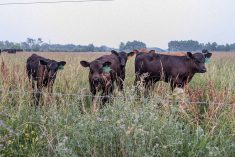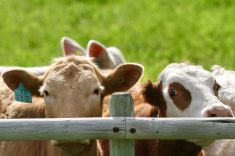LA BROQUERIE, Man. – Spreading pig manure on perennial forages and hay crops can double or triple the yield and weight gain.
That’s the conclusion of a study by University of Manitoba animal science researchers doing side-by-side comparisons of three systems.
One system is a pasture and hay fields not given hog manure. Another is a pasture and hay system that has hog manure worth about 110 pounds of nitrogen per hectare. The third is a system using two treatments of 55 lb. per hectare of nitrogen in hog manure.
Read Also

U.S. farm group supports supply management
U.S. grassroots farm advocacy group pushing new agriculture legislation that would move towards supply management like Canada has for dairy industry
The results were dramatic.
“Forages respond tremendously to the addition of nutrients like you find in manure,” said plant scientist Don Flaten.
Researcher Kim Ominski found that both hog manure application rates (once versus twice per year) caused yields of harvested hay to more than triple, from 1.3 tonnes per hectare to 4.6.
Protein levels were slightly better in the one application than in the split application, for pasture and forage production.
Pasture yields were 50 percent higher on once-manured land than on unmanured land, and yields on twice-manured land were 50 percent above the once-manured level.
The unmanured land produced 1.2 tonnes of pasture growth per hectare versus 1.9 for once manured and three tonnes for the split manuring.
The grazing days difference was also huge: 101 days for unmanured, 319 days for once manured and 376 with twice manured.
The live weight gain was 104 kg per hectare in a season for the unmanured pasture, 344 kg for the once manured and 325 for the twice manured.
“These are pretty significant differences in terms of production response,” said Ominski.















